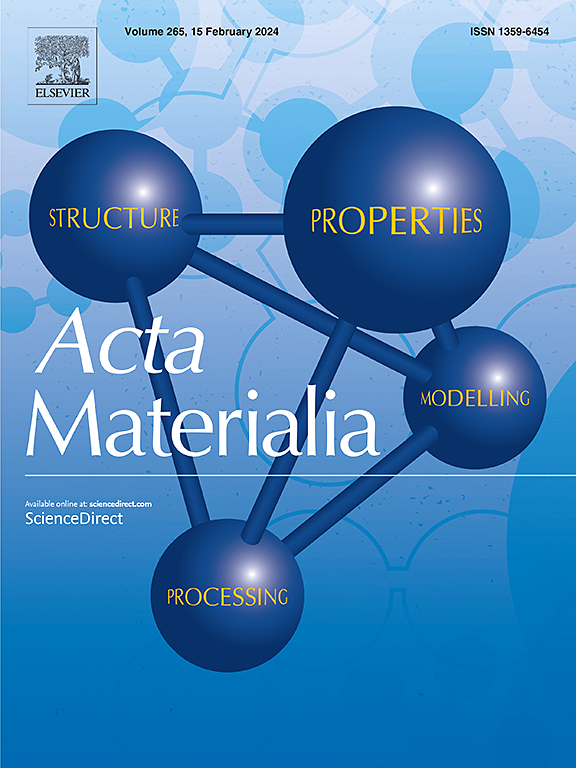ps - gen:通过深度生成概率建模的材料设计过程-结构-属性链的随机反演
IF 9.3
1区 材料科学
Q1 MATERIALS SCIENCE, MULTIDISCIPLINARY
引用次数: 0
摘要
材料逆向设计是材料科学的一个基础挑战,在许多行业都有重要的应用。传统方法将结构-性能(SP)联系倒置,以识别具有目标性能的微结构,通常忽略了生产工艺的可行性,导致微结构可能无法制造。要实现期望的性能和可实现的制造过程,需要颠倒整个过程-结构-属性(PSP)链。然而,这一任务充满了挑战,包括整个建模链的随机性、微观结构和工艺参数的高维性以及逆问题固有的病态性。本文提出了一个名为PSP- gen的新框架,用于面向目标的材料设计,该框架通过使用深度生成模型对整个PSP链进行建模,有效地解决了这些挑战。它采用两组连续的、微观结构和属性感知的潜在变量,其中第一组提供了捕获微观结构生成随机方面的低维表示,而第二组是与加工参数的直接联系。这种结构化的低维嵌入不仅简化了高维微观结构数据的处理,而且便于基于梯度的优化技术的应用。该方法的有效性和效率在两相材料的反设计中得到了证明,其目标是设计具有目标有效渗透率的微观结构。我们在具有挑战性的环境中比较了最先进的替代方案,包括有限的训练数据,没有可用的训练数据的目标属性区域,以及工艺参数和微观结构具有高维表示的设计任务。本文章由计算机程序翻译,如有差异,请以英文原文为准。


PSP-GEN: Stochastic inversion of the Process–Structure–Property chain in materials design through deep, generative probabilistic modeling
Inverse material design is a cornerstone challenge in materials science, with significant applications across many industries. Traditional approaches that invert the structure–property (SP) linkage to identify microstructures with targeted properties often overlook the feasibility of production processes, leading to microstructures that may not be manufacturable. Achieving both desired properties and a realizable manufacturing procedure necessitates inverting the entire Process–Structure–Property (PSP) chain. However, this task is fraught with challenges, including stochasticity along the whole modeling chain, the high dimensionality of microstructures and process parameters, and the inherent ill-posedness of the inverse problem. This paper proposes a novel framework, named PSP-GEN, for the goal-oriented material design that effectively addresses these challenges by modeling the entire PSP chain with a deep generative model. It employs two sets of continuous, microstructure- and property-aware, latent variables, the first of which provides a lower-dimensional representation that captures the stochastic aspects of microstructure generation, while the second is a direct link to processing parameters. This structured, low-dimensional embedding not only simplifies the handling of high-dimensional microstructure data but also facilitates the application of gradient-based optimization techniques. The effectiveness and efficiency of this method are demonstrated in the inverse design of two-phase materials, where the objective is to design microstructures with target effective permeability. We compare state-of-the-art alternatives in challenging settings involving limited training data, target property regions for which no training data is available, and design tasks where the process parameters and microstructures have high-dimensional representations.
求助全文
通过发布文献求助,成功后即可免费获取论文全文。
去求助
来源期刊

Acta Materialia
工程技术-材料科学:综合
CiteScore
16.10
自引率
8.50%
发文量
801
审稿时长
53 days
期刊介绍:
Acta Materialia serves as a platform for publishing full-length, original papers and commissioned overviews that contribute to a profound understanding of the correlation between the processing, structure, and properties of inorganic materials. The journal seeks papers with high impact potential or those that significantly propel the field forward. The scope includes the atomic and molecular arrangements, chemical and electronic structures, and microstructure of materials, focusing on their mechanical or functional behavior across all length scales, including nanostructures.
 求助内容:
求助内容: 应助结果提醒方式:
应助结果提醒方式:


